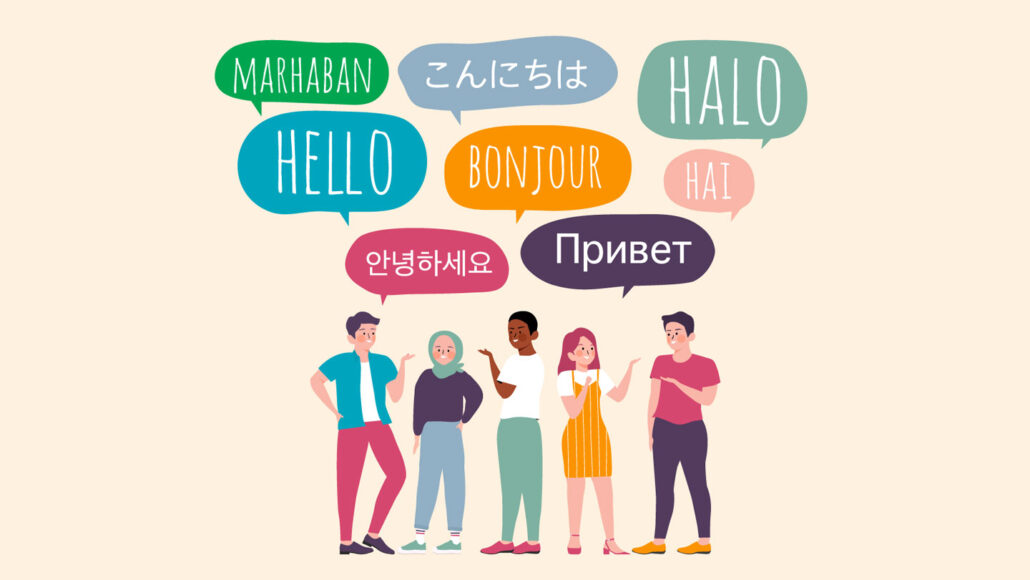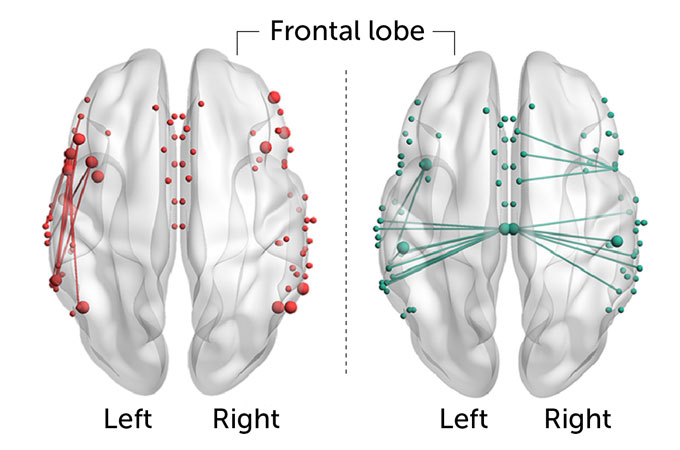Your brain wires itself to match your native language
Wiring patterns seem to reflect grammatical characteristics specific to different languages
Language isn’t just the words we say, it’s who we are — literally. New research hints that our native languages shape the network of white matter that connects and speeds communication between language-processing parts of the brain.
MUSSBILA/ISTOCK/GETTY IMAGES PLUS
The language we learn growing up seems to leave a lasting, biological imprint on our brains.
German and Arabic native speakers have different connection strengths in specific parts of the brain’s language circuit, researchers report February 19 in NeuroImage, hinting that the cognitive demands of our native languages physically shape the brain. The new study, based on nearly 100 brain scans, is one of the first in which scientists have identified these kinds of structural wiring differences in a large group of monolingual adults.
“The specific difficulties [of each language] leave distinct traces in the brain,” says neuroscientist Alfred Anwander of the Max Planck Institute for Human Cognitive and Brain Sciences in Leipzig, Germany. “So we are not the same if we learn to speak one language, or if we learn another.”
Every human language expresses itself using a different set of tricks. Some use rich systems of suffixes and prefixes to build enormous, dense words. Others change how words sound or how they are arranged within phrases to create meaning. Our brains process these tricks in a constellation of brain regions connected by white matter. This tissue routes long, cablelike nerve cells from one part of the brain to another and speeds up communication between them. Wiring brain regions together this way is part of how we learn: The more often we use a connection, the more robust it becomes.
Different parts of the brain’s language circuit have different jobs. But while the large-scale structure of this circuit is universal, every language has “its own difficulties,” which might result in different white matter networks, Anwander says.
He and his team recruited 94 healthy volunteers who spoke one of two unrelated native languages — German or Levantine Arabic — for structural MRI brain scans. The Arabic speakers had arrived recently in Germany as refugees and didn’t yet speak German. They tended to have stronger connections across their left and right hemispheres, the scans revealed, whereas the German speakers had a denser network of connections within the left hemisphere.
“This corresponds to the specific difficulties in the respective languages,” Anwander says.
For instance, the complexity of Arabic’s roots — trios of consonants that buddy up with vowel patterns to produce words — might demand extra effort from parts of the brain involved in parsing sounds and words. A common example of this kind of root is k-t-b, which forms words related to writing like kitaab (book), taktub (you or she writes) and maktab (office). Arabic text is also written right to left, which the researchers speculate might demand more communication between the hemispheres.
German, for its part, has a complex and flexible word order that allows the language to create subtle shades of meaning just by shuffling around words within a phrase. While an English speaker can’t rearrange the words woman, ball and dog in the sentence “the woman gave the dog a ball” without garbling the core meaning, it’s possible to do exactly that in German. This could explain the German speakers’ denser white matter networks within parts of the left hemisphere that parse word order.
Still, it’s possible that the Arabic speakers’ recent arrival in Germany could have tweaked their white matter networks too, says Zhenghan Qi, a cognitive neuroscientist at Northeastern University in Boston who was not part of the study.
Just one month of learning a new language, she says, can lead to more engagement of the brain’s right hemisphere and greater interaction between the two hemispheres. Examining MRI scans of Arabic speakers living in their home countries or tracking brain changes as people learn new languages would help separate the effects of language learning from those of native language, Qi says.
While the new study focused just on the language circuit, parts of that circuit handle more than just language, Qi says. And language learning “might also change nonlinguistic regions of the brain,” so it’s possible that people with different language experiences might process nonlanguage information differently too, she says.
It’s still controversial whether language-associated white matter rewiring affects more than just language, Anwander says. But at least within the language circuit, the new results hint that our mother tongues are far more than just the words we happened to grow up with — they are quite literally a part of us.



No comments:
Post a Comment